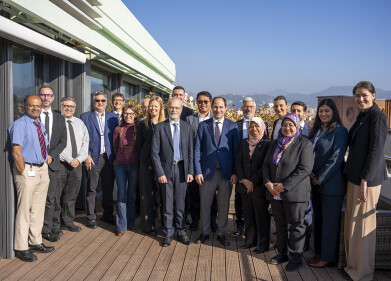Air clean up
How Many Cities Exceed Pollution Limits?
Nov 21 2017
A new report from a panel of environmental experts has found that over 2,100 cities around the world are exposed to unsafe levels of pollution, as recommended by the World Health Organisation (WHO).
The report, which was published in the medical journal The Lancet, found that concentrations of particulate matter 2.5 (PM2.5, a harmful contaminant which is less than 2.5 microns in diameter and can easily be inhaled) had risen by 11.2% since 1990.
The elevated levels of pollution could have grave consequences for the planet and its inhabitants, contributing to climate change and a whole host of related health problems for the human race.
Poor air quality around the world
After surveying concentrations of PM2.5 in 2,971 cities all over the world, the study found that 71% of those (or 2,109) suffered from unsafe levels of the contaminant. Unsurprisingly, the majority of these were found in the developing world, where population booms, rapid industrial growth and primitive methods of energy generation contributed to the increased pollution.
Indeed, 803,000 deaths in 21 Asian countries alone in 2015 point to the fact that an over-reliance on coal and fossil fuels both in industry and at home is a grave problem. It’s imperative, then, that sustainability is fully explored in the mining industry, not only to safeguard a long-term source of energy, but also to avoid endangering the lives of those exposed to its unwanted side effects.
Of course, the developing world is not the only place subject to unhealthy air, and the UK itself is also home to 44 of the cities with unsafe levels of PM2.5.
Global warming a health concern
Higher levels of pollution contribute to global warming, which is not just a contributing factor to rising sea levels but also a concern for human health. With global temperatures rising by almost a full degree (0.9°C) in the years between 2000 and 2016, it’s inevitable that the older generation will become more vulnerable to the physical stress of heatwaves.
Indeed, in that same window, the number of elderly people suffering the ill effects of heatwaves rose by a staggering 125 million. At the same time, the amount of time people were able to devote to difficult, physical labour outdoors fell by 5.3% as a result of increased temperatures. This spells bad news for national and international economies.
Finally, higher temperatures help proliferate dangerous diseases such as Dengue fever. With no vaccine and no cure, Dengue affects roughly 390 million people every year according to the WHO, with many of those infected dying from the disease. The mosquitoes which transmit it thrive in tropical climates, which pose their own problems for pollution prevention.
Adaptation and transformation needed immediately
Despite these unmistakable warning signs of the ever-worsening situation, governments, cities and corporations are slow to act. “Less than a third of countries have done anything so far,” explained Georgina Mace, one of the authors of the report. “In low-income countries in particular, there is low expenditure on adaptation.”
What is required is a more rapid transition to cleaner sources of energy, include wind, wave and solar power for electricity generation and electric vehicles (EVs) for transportation. While the number of EVs sold worldwide last year (77 million) might sound encouraging, it’s a mere drop in the ocean when compared to the 1.2 billion fossil fuel cars on the road.
Hugh Montgomery, the chairman of the Lancet’s climate change countdown, was unequivocal in his stance on the immediacy of the situation. “[Climate change] is the major health threat of the 21st century,” he said. “There's an urgent need to address it.”
Events
Feb 05 2025 Nantes, France
Feb 16 2025 Kampala, Uganda
Feb 26 2025 Chennai, India
Feb 26 2025 Tulsa, OK, USA
WATERTECH CHINA (GUANGDONG) 2025
Mar 05 2025 Guangdong, China












